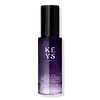What's inside
What's inside
 Key Ingredients
Key Ingredients

 Benefits
Benefits

 Concerns
Concerns

 Ingredients Side-by-side
Ingredients Side-by-side

Water
Skin ConditioningSodium C14-16 Olefin Sulfonate
CleansingSorbitol
HumectantCocamidopropyl Betaine
CleansingAcrylates Copolymer
Camellia Sinensis Leaf Extract
Antimicrobial1,2-Hexanediol
Skin ConditioningCeramide AP
Skin ConditioningCholesterol
EmollientPhytosphingosine
Skin ConditioningSodium Stearoyl Lactylate
EmulsifyingXanthan Gum
EmulsifyingCarbomer
Emulsion StabilisingPentylene Glycol
Skin ConditioningGlycerin
HumectantFructose
HumectantUrea
BufferingCitric Acid
BufferingSodium Hydroxide
BufferingMaltose
MaskingSodium PCA
HumectantSodium Chloride
MaskingSodium Lactate
BufferingTrehalose
HumectantAllantoin
Skin ConditioningSodium Hyaluronate
HumectantGlucose
HumectantLactose
HumectantHydroxypropyl Methylcellulose
Emulsion StabilisingJojoba Esters
EmollientTocopheryl Acetate
AntioxidantAscorbyl Palmitate
AntioxidantUltramarines
Parfum
MaskingGluconolactone
Skin ConditioningSodium Benzoate
MaskingDisodium EDTA
Water, Sodium C14-16 Olefin Sulfonate, Sorbitol, Cocamidopropyl Betaine, Acrylates Copolymer, Camellia Sinensis Leaf Extract, 1,2-Hexanediol, Ceramide AP, Cholesterol, Phytosphingosine, Sodium Stearoyl Lactylate, Xanthan Gum, Carbomer, Pentylene Glycol, Glycerin, Fructose, Urea, Citric Acid, Sodium Hydroxide, Maltose, Sodium PCA, Sodium Chloride, Sodium Lactate, Trehalose, Allantoin, Sodium Hyaluronate, Glucose, Lactose, Hydroxypropyl Methylcellulose, Jojoba Esters, Tocopheryl Acetate, Ascorbyl Palmitate, Ultramarines, Parfum, Gluconolactone, Sodium Benzoate, Disodium EDTA
Water
Skin ConditioningCoco-Caprylate/Caprate
EmollientRosa Damascena Flower Water
MaskingC9-12 Alkane
SolventGlycerin
HumectantBrassica Campestris/Aleurites Fordi Oil Copolymer
Skin ConditioningSqualane
EmollientNiacinamide
SmoothingTheobroma Cacao Seed Butter
EmollientGlyceryl Stearate
EmollientCandelilla/Jojoba/Rice Bran Polyglyceryl-3 Esters
EmulsifyingSynthetic Fluorphlogopite
Butyrospermum Parkii Butter
Skin ConditioningAmethyst Powder
AbrasiveAnastatica Hierochuntica Extract
AstringentRosa Rugosa Flower Oil
MaskingAloe Barbadensis Leaf Juice
Skin ConditioningAvena Sativa Kernel Flour
AbrasiveTocopherol
AntioxidantCetearyl Alcohol
EmollientSodium Stearoyl Lactylate
EmulsifyingButylene Glycol
HumectantHydroxyacetophenone
Antioxidant1,2-Hexanediol
Skin ConditioningCaprylyl Glycol
EmollientHydroxystearic/Linolenic/Oleic Polyglycerides
EmollientXanthan Gum
EmulsifyingSodium Phytate
Polyacrylate Crosspolymer-6
Emulsion StabilisingMaltodextrin
AbsorbentPotassium Sorbate
PreservativeSodium Benzoate
MaskingCitronellol
PerfumingEugenol
PerfumingGeraniol
PerfumingMica
Cosmetic ColorantCI 77891
Cosmetic ColorantCI 77491
Cosmetic ColorantWater, Coco-Caprylate/Caprate, Rosa Damascena Flower Water, C9-12 Alkane, Glycerin, Brassica Campestris/Aleurites Fordi Oil Copolymer, Squalane, Niacinamide, Theobroma Cacao Seed Butter, Glyceryl Stearate, Candelilla/Jojoba/Rice Bran Polyglyceryl-3 Esters, Synthetic Fluorphlogopite, Butyrospermum Parkii Butter, Amethyst Powder, Anastatica Hierochuntica Extract, Rosa Rugosa Flower Oil, Aloe Barbadensis Leaf Juice, Avena Sativa Kernel Flour, Tocopherol, Cetearyl Alcohol, Sodium Stearoyl Lactylate, Butylene Glycol, Hydroxyacetophenone, 1,2-Hexanediol, Caprylyl Glycol, Hydroxystearic/Linolenic/Oleic Polyglycerides, Xanthan Gum, Sodium Phytate, Polyacrylate Crosspolymer-6, Maltodextrin, Potassium Sorbate, Sodium Benzoate, Citronellol, Eugenol, Geraniol, Mica, CI 77891, CI 77491
 Reviews
Reviews

Ingredients Explained
These ingredients are found in both products.
Ingredients higher up in an ingredient list are typically present in a larger amount.
1,2-Hexanediol is a synthetic liquid and another multi-functional powerhouse.
It is a:
- Humectant, drawing moisture into the skin
- Emollient, helping to soften skin
- Solvent, dispersing and stabilizing formulas
- Preservative booster, enhancing the antimicrobial activity of other preservatives
Glycerin is already naturally found in your skin. It helps moisturize and protect your skin.
A study from 2016 found glycerin to be more effective as a humectant than AHAs and hyaluronic acid.
As a humectant, it helps the skin stay hydrated by pulling moisture to your skin. The low molecular weight of glycerin allows it to pull moisture into the deeper layers of your skin.
Hydrated skin improves your skin barrier; Your skin barrier helps protect against irritants and bacteria.
Glycerin has also been found to have antimicrobial and antiviral properties. Due to these properties, glycerin is often used in wound and burn treatments.
In cosmetics, glycerin is usually derived from plants such as soybean or palm. However, it can also be sourced from animals, such as tallow or animal fat.
This ingredient is organic, colorless, odorless, and non-toxic.
Glycerin is the name for this ingredient in American English. British English uses Glycerol/Glycerine.
Learn more about GlycerinSodium Benzoate is a preservative. It's used in both cosmetic and food products to inhibit the growth of mold and bacteria. It is typically produced synthetically.
Both the US FDA and EU Health Committee have approved the use of sodium benzoate. In the US, levels of 0.1% (of the total product) are allowed.
Sodium benzoate works as a preservative by inhibiting the growth of bacteria inside of cells. It prevents the cell from fermenting a type of sugar using an enzyme called phosphofructokinase.
It is the salt of benzoic acid. Foods containing sodium benzoate include soda, salad dressings, condiments, fruit juices, wines, and snack foods.
Studies for using ascorbic acid and sodium benzoate in cosmetics are lacking, especially in skincare routines with multiple steps.
We always recommend speaking with a professional, such as a dermatologist, if you have any concerns.
Learn more about Sodium BenzoateThis ingredient also goes by the name SSL. It is a non-toxic, biodegradable ingredient made from renewable sources.
SSL is typically used as a surfactant and emulsifier in skincare to stabilize water-based formulas and improve texture. It can be synthetic or animal-derived.
Water. It's the most common cosmetic ingredient of all. You'll usually see it at the top of ingredient lists, meaning that it makes up the largest part of the product.
So why is it so popular? Water most often acts as a solvent - this means that it helps dissolve other ingredients into the formulation.
You'll also recognize water as that liquid we all need to stay alive. If you see this, drink a glass of water. Stay hydrated!
Learn more about WaterXanthan gum is used as a stabilizer and thickener within cosmetic products. It helps give products a sticky, thick feeling - preventing them from being too runny.
On the technical side of things, xanthan gum is a polysaccharide - a combination consisting of multiple sugar molecules bonded together.
Xanthan gum is a pretty common and great ingredient. It is a natural, non-toxic, non-irritating ingredient that is also commonly used in food products.
Learn more about Xanthan Gum